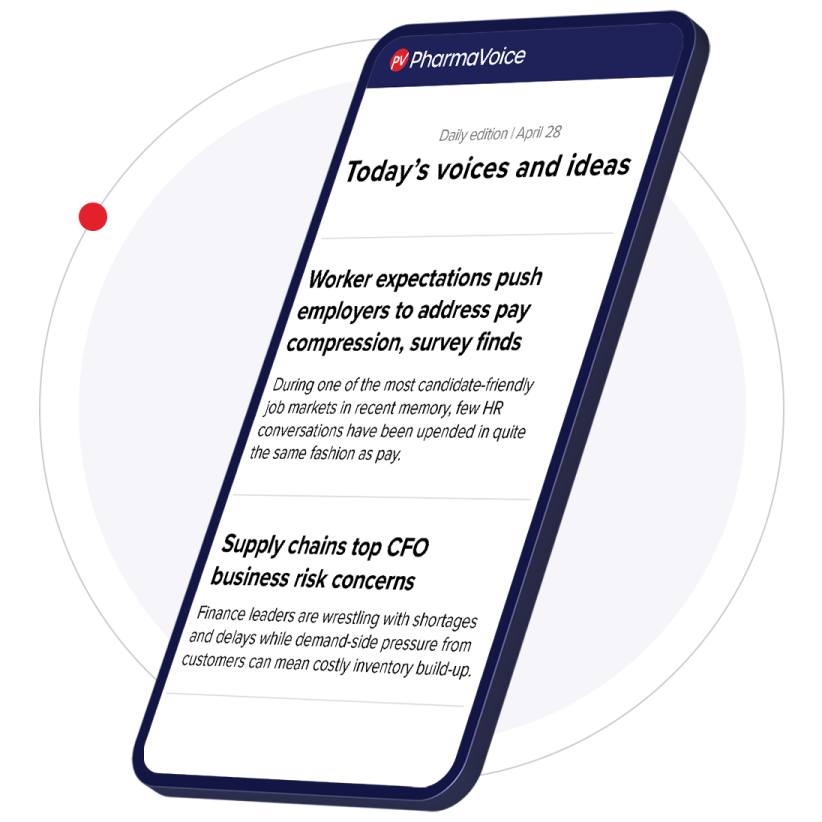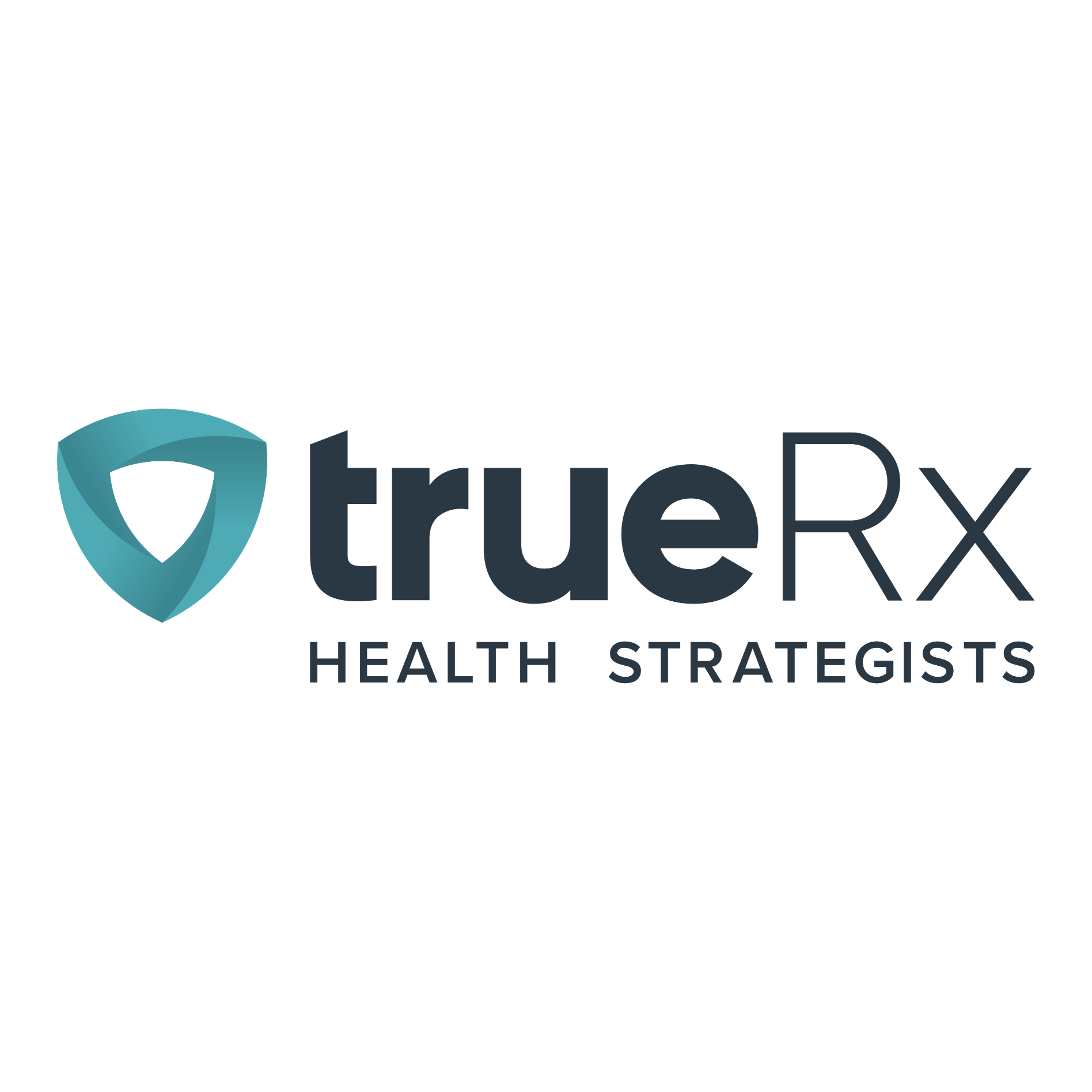by Elisabeth Pena Bio-Marketing Focusing on the Science Bio marketing Just as biotechnology products are developed differently from small-molecule pharmaceutical products, biotech products also require a differenT marketing approach. Marketers of these innovative products find success with strategies that focus on educating physicians and patients on the science behind these drugs. As the biotech industry flourishes and more biotech products reach patients, the marketing strategies required to highlight the unique benefits of these products are being fine-tuned and perfected. There are currently more than 155 marketed biotechnology products, of which more than 70% were introduced in the last six years, and there are 370 biotechnology drug products and vaccines in clinical development, targeting more than 200 different indications. The top 10 biotechnology companies had sales of $15.8 billion in 2002. Analysts at Navigant Consulting expect revenue to increase at an annual rate of 15% through 2007. The market for these drugs is expected to grow rapidly during the next five to 10 years, topping $31 billion by 2007 for the top 10 biotechnology companies alone. booming biotech Biotech products are relatively new compared with their small-molecule counterparts. Analysts say this is one of the reasons the biotech industry has done relatively well in recent years. “Biotech companies are still looking at low-hanging fruit; the compounds that they are developing are still the obvious biologics as opposed to the pharmaceutical industry, which has exhausted the obvious small-molecule drugs,” says Ashwin Singhania, an associate at Navigant Consulting. Another factor in biotech’s favor is that companies are pursuing products to treat conditions that are not being adequately addressed. “Biotech companies are pursuing indications with large unmet needs,” Mr. Singhania says. “For example, products have been approved that target such diseases as rheumatoid arthritis. In some cases, biologics are able to alter and modify the disease so physicians can treat the condition not just the symptoms.” By offering physicians and patients new methods of action and treatment options, biotech products are generating excitement in the marketplace. “The important difference with novel biotechnology or high-science products is the great promise that these products hold in terms of their mechanism of action,” says Bob Terifay, senior VP of sales and marketing, Velcade, at Millennium Pharmaceuticals Inc. “As many of these products are moving through their development stages, there is a great deal of excitement among scientists and thought leaders.” Groundbreaking products that approach a disease or condition in a different way oftentimes result in a new set of marketing challenges. Millennium’s Velcade, approved in May 2003 for relapsed and refractory multiple myeloma, is an example of a biotech product that generated a big buzz in the scientific and medical communities. Velcade, the first of a new class of medicines called proteasome inhibitors, was the first treatment in more than a decade to be approved for patients with multiple myeloma. The product also received European marketing approval in April for the same indication and will be marketed there by Ortho Biotech. When it became apparent that multiple myeloma tumors responded very rapidly to Velcade therapy in test-tube experiments, thought leaders began approaching the company to encourage the rapid development of this product. As Phase I results demonstrated the same responsiveness, the company moved forward with the Food and Drug Administration to accelerate the development and approval of Velcade. Velcade was granted priority review by the FDA on March 10, 2003, and was approved about two months later, just four and a half years from the first human dose. The development and approval of Velcade is among the most rapid for a cancer treatment. Along with an accelerated development timeline, there was an accelerated marketing timeline. The FDA approval of Velcade was based primarily upon the results of a major multicenter Phase II open-label, single-arm trial, which included 202 patients with relapsed and refractory multiple myeloma who had received at least two prior therapies. “Traditionally during a Phase II program a company is doing market planning, basic medical-education programming, and developing advertising themes,” Mr. Terifay says. “For us, all of this was accelerated because there was the potential for approval at the conclusion of our Phase II trial. That created a challenge from a marketing perspective.” Millennium’s challenge with Velcade was to develop the marketplace in the absence of complete clinical data. In addition, Velcade and proteasome inhibition represented a new approach to treating multiple myeloma. The proteasome is an enzyme complex that exists in all cells and plays an important role in degrading proteins that control the cell cycle and cellular processes. By blocking the proteasome, Velcade disrupts numerous biologic pathways, including those related to the growth and survival of cancer cells. “The clinical data were coming in at the same time that we had to prepare the market for a potential launch,” Mr. Terifay says. “That involved working with the physicians who were studying the product to elucidate why they were excited about the product, why the mechanism of action made them excited, and what they had seen in terms of response rates in individual patients. We then had to figure out how to educate the oncology community about the product in the absence of clinical data.” Varun Nanda, VP of sales and marketing, Avastin, at Genentech also has had to react to the rapid pace of development in the biotechnology arena. Avastin was approved in February 2004 for use in combination with intravenous 5-Fluorouracil-based chemotherapy as a treatment for patients with first-line or previously untreated metastatic cancer of the colon or rectum. Avastin is the first FDA-approved therapy designed to inhibit angiogenesis, the process by which new blood vessels develop, which is necessary to support tumor growth and metastasis. Avastin was submitted under the FDA’s fast-track program, which permits submission of documents on an ongoing, or rolling basis, to facilitate the review process. Genentech submitted the final documents for Avastin’s biologics license application (BLA) in September 2003. In November 2003, the FDA granted priority review status for Avastin and committed to reviewing the submission within six months of filing. “This is a very fast-moving marketplace,” Mr. Nanda says. “A few years ago there were not many products that could be used to treat metastatic colon cancer and in the last few years there have been a number of entries. It was important for us to do the appropriate clinical trials and provide information about the trials and safety and efficacy to position the product in the marketplace to be used appropriately. That was the biggest challenge, especially given that it is quickly becoming a crowded market.” Analysts believe, however, that the rapid pace of biotech product development will begin to slow in the near future. “As far as average development times and review times, biotechnology products are going to lose the advantage that they have had over small-molecule drugs,” Mr. Singhania says. “The FDA is getting more comfortable with biologic drugs and is scrutinizing applications more closely. As regulators begin to demand more information, subsequent complex clinical trials for biological products will cause development timelines to lengthen.” Marketing the Science The new advances that biotech products represent make for an opportune story for marketing to tell. “With high-science products our approach involves making sure that the information is disseminated appropriately and that people understand the details of the science behind the products,” Mr. Nanda says. “Many times with high-science products a paradigm shift in how physicians think is required.” Educating physicians not just about the product but about the science and mechanisms of action behind the drug are also part of the marketing strategy at Vertex Pharmaceuticals. “We promote the science,” says N. Anthony Coles, M.D., senior VP of commercial operations at Vertex Pharmaceuticals. “We talk about the science and educate physicians and patients on the science. We want them to understand that we found a new mechanism or new target that is an important advance in the treatment of disease.” Marketing in the high-science therapy area also differs from traditional pharmaceutical marketing when it comes to the physician’s office. According to Nanske Wood, president of Carbon Healthcare Communications, detailing biotech products is not about leaving samples and reminding a physician to write a prescription. “Biotech sales reps will go into bone-marrow transplant centers, for example, and detail a conditioning agent,” she says. “This is a very different situation, with very different requirements from the traditional detailing model.” In the high-science marketing model, a relationship with the physician based on education and information is critical. According to Rob Perez, senior VP of sales and marketing at Cubist, this relationship is why physicians will make time to see a sales representative from a biotechnology company. “With other types of products, the relationship is based more on samples and sound bites,” he says. “Companies that market high-science products have much more of a local commercial model based around the representative as opposed to a centralized model where most of the tactics are dictated by the home office.” He highlights Cubist’s strategy, which includes hiring an experienced salesforce, as well as a team of clinical-science liaisons who interact with thought leaders on a more scientific level. In addition to using the science to foster better physician relations, the science-based origins and culture of biotech companies are evident in the products these companies launch and inevitably in the marketing strategies employed for these products. “Genentech takes a scientific approach toward commercialization,” Mr. Nanda says. “The types of products that we bring to market are unique and have scientific leadership. When we talk about marketing strategies, we take a marketing-science approach toward developing those strategies, including analyzing the market, the opportunities, and the types of resources needed. This is done in the context of ultimately always going back to being the scientific leader.” Although educating physicians and patients about the science behind a biotech product is an important part of marketing biotech drugs, experts say there is a delicate balance between explaining the mechanism of action and depending too much on the science. “Many high-science companies get emotionally wrapped up in the science and don’t spend enough time crafting the benefit platform,” says Don Wetherhold, president of RxPedite. “In the end, the science itself is not going to be enough to change the behavior of key stakeholders. Patients, advocates, prescribers, and payers all want to know what the drug will mean to them in real life and in real terms. Although marketing high-science products requires increased scientific expertise and emphasis, medical education, and publication, it is important to avoid the potential pitfall of inundating the audience with technical data and failing to communicate the practical and clinical relevance.” Dr. Coles says part of marketing the science is explaining the particular product attributes the new scientific advance brings to treatment. “Obviously one might assume patients prefer a more convenient therapy, but how is the impact of that measured in terms of the additional convenience and adherence, and what is the relationship to the outcome,” he says. “That too is part of the scientific dialogue.” Direct to Patient Biotech products generally do not employ direct-to-consumer (DTC) strategies because of the cost and because these products tend to be targeted to smaller, more specific audiences. But marketing experts have found that the best promotional strategies for biotech products incorporate a direct-to-patient (DTP) component – delivering information about the products to motivated patients and their family members. “The need for more in-depth information is important with biotech products, whether companies are talking about cancer products or newer products for rheumatoid arthritis,” Mr. Terifay says. “Patients need to understand what the drugs will do for them, but also what the side effects are. It is important that we provide a vehicle that offers enough significant information so the patients are not just getting brand-name awareness. DTP, preferably through an advocacy or third-party organization that can offer additional insights, is generally the best way to go.” Scientific communities, or biotechnology clusters, and economic development centers, which are growing in number and in influence, are often a great resource for companies to tap into to find third-party organizations or thought leaders in different therapeutic areas. (For more information, see box on page 42.) Dr. Coles agrees that DTP initiatives can be a successful marketing tactic depending on the disease area and the target patient group. He points out that certain patient groups, such as those who have multiple sclerosis or hepatitis C, are ideal for this marketing strategy. “Most materials developed for high-science products have a totally different approach in terms of being more information-heavy and data-driven for physicians and more informative and supportive for patients,” Ms. Wood says. “We tend to create patient-support materials that help patients understand what may be a very complex disease or a very involved therapy. This brings greater creative challenges than other areas.” The Formulary Formula Expert opinions differ as to whether biotech companies face a tougher time gaining formulary access for their products than companies marketing traditional pharmaceuticals. Dr. Coles finds little difference in the formulary challenges for biotech and pharma products. “We have to work just as hard in educating the purchasers about these products and talking about the value that these products create for the purchasers and their patients,” he says. “We all have a responsibility to work with the formulary providers and help demonstrate the value that these products are going to bring and that value comes in all forms. Understanding how our product can save the system money is very important.” And according to Mr. Terifay, because many biotech products are being developed for an unmet market need, formulary resistance is often not a problem. “Velcade is first in class and the only protease inhibitor available for a patient population that has failed all other available therapies,” he says. “In terms of formulary acceptance, we did not encounter a lot of resistance. Obviously, we wanted to make sure that the product was priced for the value it was providing to patients. We reached $100 million in cumulative sales by the end of April for Velcade, making it one of the most successful oncology launches in history.” But other experts have found that less successful biotech launches lacked preparation for dealing with payers and reimbursement issues. “Excellent premarketing plans give strong consideration for how the product is going to be reimbursed and distributed,” Mr. Perez says. “With high-priced products, companies have to ensure they understand the reimbursement structure. Some biotech product launches have failed, not because of the science or the clinical nature of the product, but because companies didn’t take into account the concerns of all the stakeholders, including the payers.” For biotech products that compete with established pharmaceutical brands, the financial limitations of the smaller biotech companies can be a disadvantage. “Many biotechnology companies don’t have the extra money or the additional resources to give rebates, for example, or bundle products,” Ms. Wood says. “In situations where their products are competing with the bigger pharmaceutical companies, the smaller biotechnology companies are at a disadvantage, since the bigger pharma companies have more products with which to negotiate, bigger salesforces, and larger budgets.” In these situations, the biotech companies have to demonstrate a genuinely unique point of difference versus products currently on formulary, and they have to be able to provide real benefits for that next-generation product. “The smaller companies have to work harder at it and make their story clear, succinct, and compelling; they have to get the key opinion leaders’ support behind their product to get their product on formulary,” Ms. Wood says. Being able to paint a clear picture of the benefits of a new, and oftentimes more expensive, biotech product is a job best carried out by an experienced salesforce. “At Cubist, we have been successful in gaining formulary access for Cubicin, not only because it is a great product, but also because we have a sales team that has experience selling in the individual hospitals we target,” Mr. Perez says. “We have a greater than 90% acceptance rate when Cubicin goes to formulary because we have experienced people who are able to call upon the materials that meet the specific needs of each particular institution. The sales team is prepared to answer any questions posed by the formulary committee.” Cubicin, launched in November 2003 in the United States after receiving FDA approval for the treatment of complicated skin and skin-structure infections caused by certain Gram-positive organisms, is a once-daily, rapidly bactericidal antibiotic. It represents a new class with a distinct mechanism of action. “Formulary success is dependent on people understanding the science behind the products,” Mr. Nanda says. “The challenge is educating the formulary decision makers about the appropriateness of the company’s products. We really take a high-road approach in providing information and answering all the questions that they have and making sure they have a clear understanding of what the product’s attributes and benefits are.” It is critical for biotech companies to develop pricing, reimbursement, and market strategies at the product or portfolio level. Mr. Wetherhold believes this effort requires knowledge of the U.S. healthcare market and likely changes in public and private payers. An understanding of how factors such as product profile, available evidence, treatment setting, and patient population can influence pricing and reimbursement is critical. The impact of DTC, copayments, rebates, samples on patients, the hassle factor for prescribers, and intermediary supply and distribution also should be considered.F PharmaVoice welcomes comments about this article. E-mail us at [email protected]. High-science products address a new target or mechanism of action for treating a particular disease or bring a radically different view to how a disease can be managed. Dr. N. Anthony Coles The most pressing marketing need for biotech companies is to get started early at the thought-leader development level – fostering dialog through advisory boards to instill a commercial perspective in the product-development process. Don Wetherhold Identifying stakeholders up front is a critical success factor for a biotech launch. A best practice is coming to that realization early enough to truly be able to differentiate a product for the key stakeholders. Rob Perez On the agency side, when we’re working with smaller companies that have high-science products we have to be smarter in terms of where and how we focus and more creative in how we target the message. Nanske Wood With biotech products, generally the key to success is having salespeople who are the best in their field and who are truly knowledgeable about the product, the therapeutic area, and the needs of patients and clinicians. Bob Terifay 2003 Biotech drug approvals New Products Product Company Indication (abbreviated) Advate Baxter Healthcare Hemophilia A Aldurazyme BioMarin Pharmaceuticals and Genzyme Mucopolysac charidosis-1 Aloxi MGI Pharma and Helsinn Healthcare Acute nausea and vomiting in chemotherapy patients Amevive Biogen Chronic plaque psoriasis Bexxar Corixa and GlaxoSmithKline Non-Hodgkin’s lymphoma Cialis Lilly ICOS LLC (joint venture of Eli Lilly Erectile dysfunction and ICOS) CosmoDerm/CosmoPlast Advanced Tissue Sciences and Inamed Wrinkles Cubicin Cubist Pharmaceuticals and Chiron Bacterial infections Elestat Inspire Pharmaceuticals, Allergan, Allergic conjunctivitis and Boehringer Ingelheim Emtriva Gilead Sciences HIV infection Estrasorb Novavax and King Pharmaceuticals Vasomotor symptoms Fabrazyme Genzyme Fabry’s disease Factive GeneSoft Pharmaceuticals Community-acquired pneumonia and acute chronic bronchitis FluMist MedImmune Flu Fuzeon Trimeris and Roche HIV-1 infection Ganite Genta Cancer-related hypercalcemia Lexiva Vertex Pharmaceuticals and GlaxoSmithKline HIV infection Namenda Neurobiological Technologies and Alzheimer’s disease Forest Laboratories Plenaxis Praecis Pharmaceuticals Prostate cancer Raptiva Xoma and Genentech Plaque psoriasis Risperdal Consta Alkermes and Johnson & Johnson Schizophrenia Somavert Nektar Therapeutics and Pfizer Acromegaly Velcade Millennium Pharmaceuticals Multiple myeloma Xolair Genentech, Tanox, and Persistent asthma Novartis Pharmaceuticals Zavesca Celltech Group and Actelion Gaucher’s disease Note: This list includes monoclonal antibodies and recombinant proteins developed by biotechnology companies and pharmaceutical companies, as well as small-molecule products developed by biotechnology companies, and other selected small-molecule or tissue-engineered products considered relevant to the biotechnology industry. Source: Biotechnology Industry Organization, Washington, D.C. For more information, visit bio.org. The Biotech Industry Received 37 FDA Approvals – new products and new indications – and $16.4 Billion in Financing in 2003. Sound Bites from the Field The Cluster Perspective PharmaVOICE asked regional biotechnology leaders around the country what their priorities are for the coming year. Leslie M. Alexandre, Dr. PH., is President and CEO of North Carolina Biotechnology Center, a private, nonprofit corporation that provides long-term economic benefit through support of biotech research, development, and commercialization statewide. For more information, visit ncbiotech.org. “Given the need to create new jobs and to bring these jobs to all parts of North Carolina, immediate priorities for the state’s biotech investments include targeting biomanufacturing; creating and attracting biotechnology start-up companies; and developing biotechnology statewide.” Fritz Bittenbender is President of PABIOTECH, which has the mission to be a catalyst to ensure Pennsylvania is a global leader in the life sciences by developing a cohesive community that unites the region’s biotechnology, pharmaceutical, research, and financial strengths. For more information, visit pabiotech.org. “Pennsylvania is one of few locations that is home to the continuum of the life sciences -world-class research institutions, emerging companies, mature industry, and global pharmaceutical companies. As we worked over the past year to serve this vibrant and diverse community, we faced two great challenges that directly impact different segments of the continuum. Access to capital is one of the greatest concerns for our emerging companies. For our larger companies, that have drugs on the market or are preparing to launch drugs, the challenges have centered on policy issues. We have been working hard to communicate the value of the life sciences to our public officials to help them understand the lengthy process to bring new therapies to market and why policies such as the re-importation of drugs from other countries will ultimately crush innovation in the United States. BIO 2005 will be held in Philadelphia and we will be focused on using this opportunity to raise our profile as a world-leading location for the life sciences and to showcase our community and the strengths of the Commonwealth. ” Barry Broome is CEO and Executive Director of Southwest Michigan First, a privately funded, nonprofit corporation formed by business and higher-education leaders to promote economic development in the Greater Kalamazoo, Mich., region. For more information, visit southwestmichiganfirst.com. “We have just launched a bioscience research commercialization center, which is a separate nonprofit designed to function as a CRO for biotech and small pharma companies. The center also invests in preseed biotech businesses for business-plan development. The center will engage the science to test its efficacy and validate the patent position. We also have formed The Bank Consortium on Innovation, a coalition of bank presidents in the region that is evaluating how banks support the emerging life-sciences sector. We also will be launching our 4th venture fund, as we always need greater sources of capital.” Anthony Campagiorni is President and CEO of the Hudson Valley Economic Development Corp., which is charged with recruiting biotech and other high-tech industries to an eight-county region stretching from just outside New York City to the state capital in Albany. For more information, visit hvedc.com. “In the coming year, companies and research institutions in the Hudson Valley will continue to solidify collaborations between biotech and the region’s wealth of pharmaceutical and semiconductor companies, which also are conducting cutting-edge research ranging from therapeutics to nanotechnology.” Anthony J. Dennis, Ph.D., is President of Omeris, a nonprofit organization designed to build and accelerate bioscience industry research and education in Ohio. For more information, visit omeris.org. “Our priorities for the coming year include significant advancement in how best to leverage our assets through the most effective public/private collaborations, acceleration of technology transfer from our major universities, and increasing the pool of early-stage and seed funds. Also, a priority is increasing the visibility of Ohio’s assets both nationally and globally, through the creation of world-class projects such as the Ohio BioRepository and the Third Frontier Network, as well as through marketing efforts.” Debbie Hart is President of Biotechnology Council of New Jersey, which promotes a business and public-policy environment in the State of New Jersey and beyond that enhances the growth and prosperity of New Jersey’s biotechnology and life-sciences companies. For more information, visit biotechnj.org. “One of our big challenges is to get better at telling New Jersey’s story. In response to this need, a $5 million advertising campaign has been established and is now under way. New Jersey has historically been reserved about telling its significant story and now is becoming more aggressive to ensure that worldwide, the message is out there that New Jersey welcomes the life-sciences industry. Our biggest challenge has been ensuring that programs and policies are developed in such a way as to benefit the widest segment of the industry and to ensure that they have the maximum impact.” Tommy Kurtz is VP of Economic Development with Greater New Orleans Inc., a public/private partnership that works to create new jobs and investment in 10 parishes of Southeast Louisiana centered on the City of New Orleans. For more information, visit norcc.org. “The State of Louisiana, our local research universities, our economic development community, and business leadership and public officials are optimistic about the opportunities of biotech for the New Orleans region and will be working with new companies forming in the state and will work to use the New Markets Tax Credit Program for both biotech company start-ups and new infrastructure investment in the downtown medical district.” Charles E. Schalliol is President and CEO of BioCrossroads, Indiana’s life- sciences initiative of public, private, and university institutions aligned to accelerate business formation and growth. For more information, visit biocrossroads.com. “Our mission is to create life-sciences companies and jobs. In 2004 our primary focus is on ensuring that seed funding is available for the very earliest startups. This capital will allow entrepreneurs to form a legal entity, file patent applications, prepare the first business plan, leave a ‘day’ job, or hire the first employee. We continue to evaluate opportunities and prioritize our efforts within the other target areas: agbiotech, biosensors, cancer, cardiovascular, neurosciences, sports-centered life sciences, bioimaging, and biomarkers.” Experts on this topic N. Anthony Coles, M.D. Senior VP, Commercial Operations, Vertex Pharmaceuticals Inc., Cambridge, Mass.; Vertex Pharmaceuticals is a global biotechnology company focused on the discovery, development, and commercialization of breakthrough drugs for a range of serious diseases. For more information, visit vrtx.com. Varun Nanda. VP, Sales and Marketing, Avastin, Genentech Inc., South San Francisco, Calif.; Genentech is a leading biotechnology company that discovers, develops, manufactures, and commercializes biotherapeutics for significant unmet medical needs; the company has 13 protein-based products on the market and 20 projects in the pipeline. For more information, visit gene.com. Rob Perez. Senior VP of Sales and Marketing, Cubist Pharmaceuticals Inc., Lexington, Mass.; Cubist is a biopharmaceutical company focused on the research, development, and commercialization of drugs that meet significant unmet medical needs. For more information, visit cubist.com. Ashwin Singhania. Associate, Navigant Consulting Inc., Chicago; Navigant is a specialized independent consulting firm providing litigation, financial, restructuring, strategic, and operational consulting services. For more information, visit navigantconsulting.com. Bob Terifay. Senior VP, Sales and Marketing, Velcade, Millennium Pharmaceuticals Inc., Cambridge, Mass.; Millennium is a leading biopharmaceutical company that focuses research, development, and commercialization activities in three therapeutic areas: oncology, cardiovascular, and inflammation. For more information, visit mlnm.com. Don Wetherhold. President, RxPedite LLC, Westerville, Ohio; RxPedite provides product launch-support services to emerging pharmaceutical and biotechnology companies and is a joint venture between Cardinal Health and inChord Communications Inc. For more information, visit inchord.com. Nanske Wood. President, Carbon Healthcare Communications, Wayne. N.J.; Carbon Healthcare, a unit of CommonHealth, is a professional advertising and promotion agency that provides biopharmaceutical and other emerging technology companies with ways of differentiating brands and building businesses. For more information, visit commonhealth.com.
An article from


Biomarketing: Focusing on the Science
Filed Under:
Pharma









